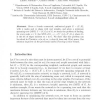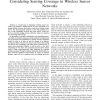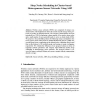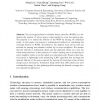1502 search results - page 8 / 301 » Node weighted scheduling |
ESA
2000
Springer
14 years 1 months ago
2000
Springer
Given a 2-node connected, undirected graph G = (V, E), with n nodes and m edges with real weights, and given a minimum spanning tree (MST) T = (V, ET ) of G, we study the problem o...
VTC
2007
IEEE
14 years 4 months ago
2007
IEEE
Abstract— A crucial issue in deploying wireless sensor networks is to perform a sensing task in an area of interest in an energy-efficient manner since sensor nodes have limited...
IEEEPACT
2000
IEEE
14 years 2 months ago
2000
IEEE
Modern computers have taken advantage of the instruction-level parallelism (ILP) available in programs with advances in both architecture and compiler design. Unfortunately, large...
ICESS
2007
Springer
14 years 4 months ago
2007
Springer
Abstract. Wireless sensor networks (WSNs) are comprised of energy constrained nodes. This limitation has led to the crucial need for energy-aware protocols to produce an efficient ...
UIC
2007
Springer
14 years 3 months ago
2007
Springer
Abstract. The coverage problem in wireless sensor networks (WSNs) is to determine the number of active sensor nodes needed to cover the sensing area. The purpose is to extend the l...




